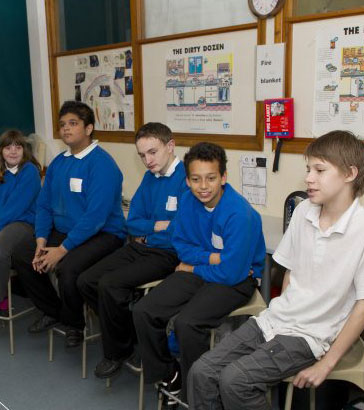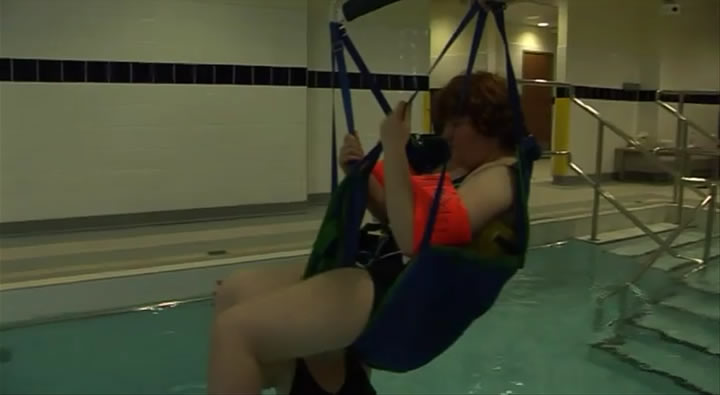For those with learning difficulties, making choices is a complex issue
(Harris, 2006). It's also important to recognise that the choices children
make are sometimes inconvenient for those giving the choices.
Unfortunately, practitioners must accept that this can have (sometimes extreme)
deleterious effects on the individual exercising their right to say no,
for example, to healthy foods (Smyth and Bell, 2006). There's no doubt that
such situations will test the educator to the full, especially when the
issue of understanding consequences is
so problematic.
This does not, however, alter the basic premise of teaching negation. Having
done this and ensured that the child has understood the power of their own
negation, we can then move on to one of the real arts of teaching, that
of encouraging the child to experiment and explore the world around them.
This takes time, patience, knowledge of the child and a considerable degree
of skill, but it can
be done.
Watch this video clip in which Alice protests over going into a swimming pool, but staff are willing to push her beyond her comfort zone because they know she likes both water and song.
We can reduce learned helplessness by adopting a number of clear and unambiguous strategies that are regularly discussed and agreed by whole class and school teams. These are:
- Building healthy attachments which allows for independent development;
- Having high expectations;
- Recognising the desirability of failure;
- Providing predictable environments;
- Rewarding independent behaviour;
- Communicating with learners at their level;
- Recognising, responding to and reinforcing the child's initiations;
- Reducing prompting;
- Providing real choices;
- Identifying what the child is interested in and using that as a basis for working with them;
- Taking risks;
- Giving the learner time to succeed.

- How often and how easily we do things for our learners;
- How often and how easily we give them cues;
- How much they expect us to help them;
- Whether this constitutes a 'healthy attachment'.

Describe what you would do and, equally importantly, what you would
not do.

Bunning, K. (1996), Development of an 'Individualised Sensory Environment' for Adults with Learning Disabilities and an
Evaluation of its Effects on their Interactive Behaviours. (unpublished thesis), London: City University
Bunning, K. (1998), To engage or not to engage? Affecting the interactions
of Learning Disabled adults. International Language and Communication Disorders.
Vol 33; pp 386-391.
Carpenter, B., Cockbill, B., Egerton, J. and English, J. (2010) Children with
complex learning difficulties and disabilities: developing meaningful pathways
to personalised learning, The SLD Experience.
Harris, J. (2006), Time to make up your mind: why choosing is difficult,
British Journal of Learning Disabilities.

Seligman, M. (1975), Learned Helplessness: On Depression, Development
and Death, San Francisco CA: W.H. Freeman.
Smyth, C.M. and Bell, D. (2006), From Biscuits to Boyfriends: the Ramifications
of Choice for People with Learning Disabilities, British Journal of
Learning Disabilities.
Vygotsky, L.S. (1978), Mind in Society: the Development of Higher Psychological
Processes. M Cole et al. (ed), MA Harvard University Press.
Ware, J. (2003), Creating a Responsive Environment for People with Profound
and Multiple Learning Difficulties,
London: David Fulton.
